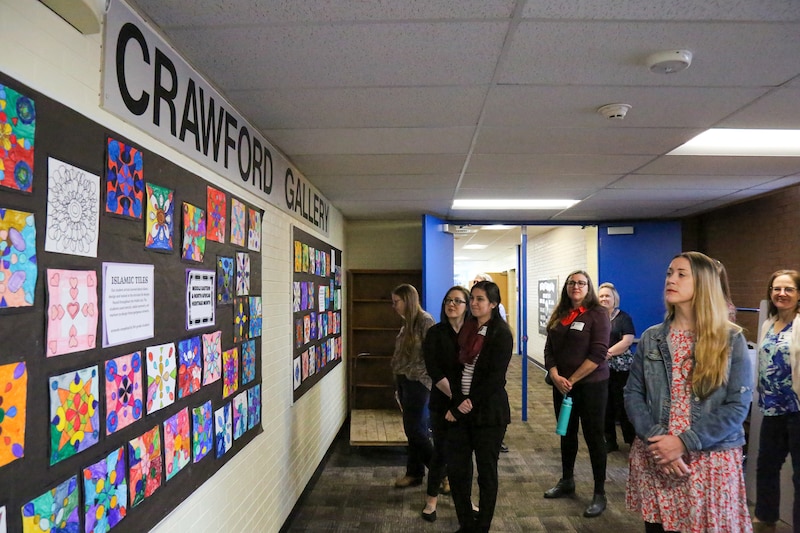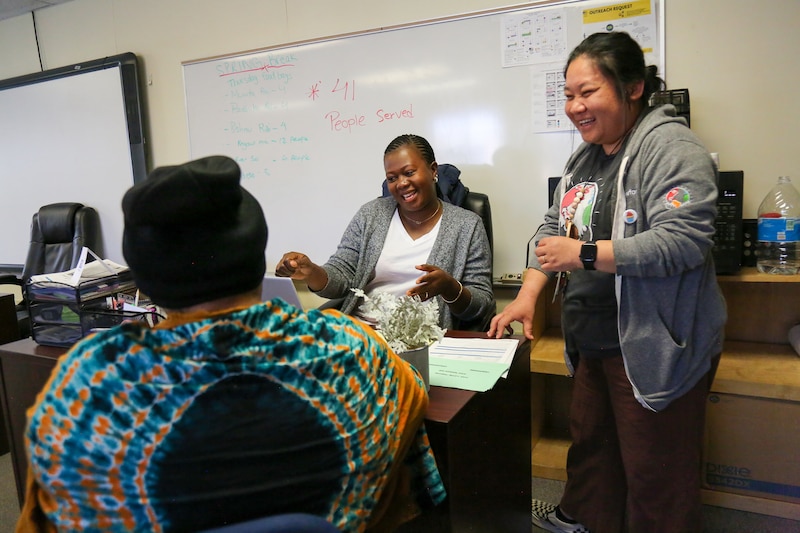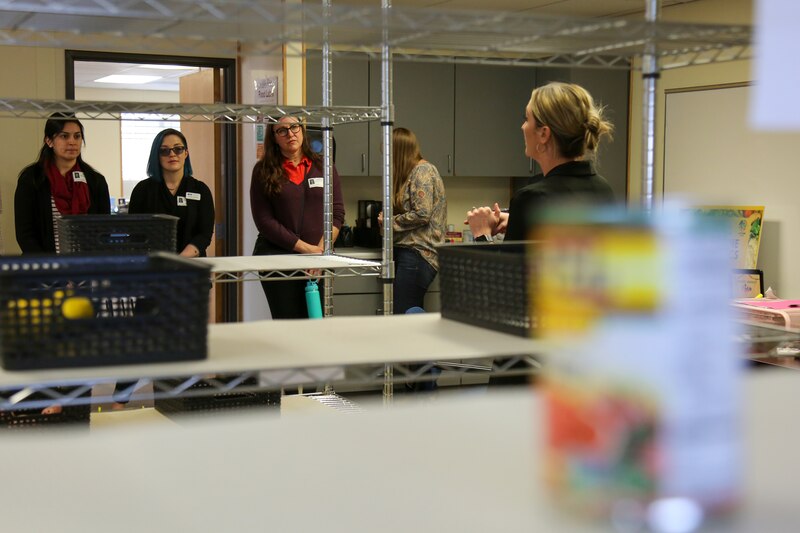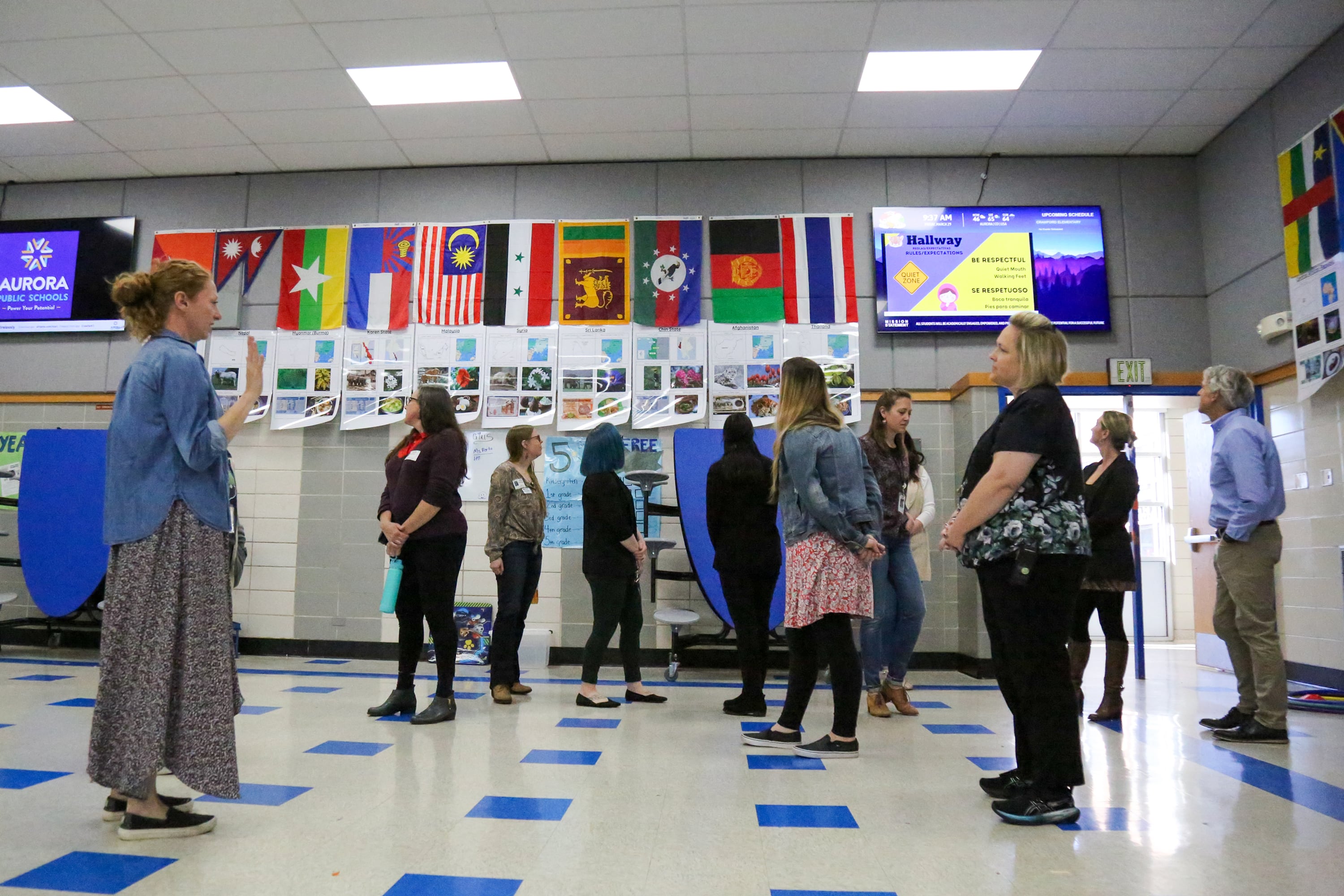Sign up for Chalkbeat Colorado’s free daily newsletter to get the latest reporting from us, plus curated news from other Colorado outlets, delivered to your inbox.
When Bishnu Rai’s children started school at Aurora’s Crawford Elementary five years ago, she initially felt lost. She wasn’t very social and she struggled to help her children, she says.
But thanks to Crawford’s community school model, she’s been getting more involved, learning English, and now feels confident enough she’s helping come up with a plan for empowering other immigrant parents.
Crawford Elementary is one of six schools in Aurora that are using the community schools model. Five of them are part of the ACTION Zone, a group of schools near Denver’s border that have high levels of poverty and large numbers of language learners. The district grouped the schools years ago as part of a plan to better support the schools with similar needs.
At Crawford, some of the work has gone on for almost 10 years, but evolved as the zone schools committed to a “community schools” model in the past five years. The approach focuses on using community partners to address whole family needs, with the end goal of ensuring that children have fewer social and emotional barriers to learning.
In Colorado, nonprofit organizations and the state education department are increasing their focus on how they support schools that want to use the community schools model. Some of these leaders say they see an untapped potential for improving communities.
At Crawford, 97% of the school’s 540 students qualify for subsidized meals, a measure of poverty, and students come from 40 different countries speaking about 25 different languages.
Through the community schools model, Crawford works with organizations to test students’ eyesight at school, helps parents learn how they can continue lessons at home, and brings families together to share about their various cultures. Rai also has taken advantage of English classes, health classes, and parent leadership classes.
Parents are involved in big school decisions. For instance, parents helped pick this year’s new principal by participating in interviews and hosting a forum where parents could ask questions of the applicants and fill out scorecards.
“If we empower our parents, this helps our kids,” Rai said. “They teach me how to raise my voice, how to speak up.”

Supporting the model takes resources
Colorado Department of Education officials recently visited Crawford and Boston K-8, two of Aurora’s zone schools, as part of the state’s work to better understand how the community schools model is implemented and what resources can be shared with other schools looking to try the same model.
State lawmakers in 2022 added adopting the model to the menu of improvement options for schools on the state’s watchlist for low performance. The state education department had some support for the model spread across various departments but now is creating a team focused just on supporting the community schools model.
“We’re happy to connect schools with resources,” said Dana Scott, director of the office of student supports for the state Department of Education. “We want to be a place where we can really create some good connections for them so schools don’t have to start from scratch.”
The state doesn’t track how many districts are using the model, but nationwide, some experts believe the model has had growing interest, and more so since the start of the pandemic. Even as schools shut down, they served as hubs for various help to families in the community, providing meals, internet, COVID tests, shots, and more.
Katie Wilberding Cross, senior director for youth initiatives and education for Mile High United Way, helps lead a coalition of organizations that want to support community schools. The coalition just started meeting in the fall.
She says the idea behind community schools is that students have needs that can be a barrier to learning, but schools should not be expected to be everything for everybody.
“There are partners that provide these different needs,” Wilberding Cross said. “United Ways are uniquely positioned to convene folks, to bring these various organizations and sectors together.”
She said part of the work is getting more districts to learn about the model. It’s hard to say how much interest is in Colorado.
“What I keep hearing is there’s a lot of percolating interest, but it’s something that hasn’t been fully tapped into,” Wilberding Cross said.
In the metro area, Adams 14 has had national support in trying to start using the model at Central Elementary, one of the district’s lowest-performing schools, which is under a state-ordered improvement plan of its own. The hope is that the model will eventually help improve student achievement.
The Harrison school district of Colorado Springs also uses the model at one of its schools, and Pueblo 60 uses it at two of its schools.
Many more schools are likely doing much of the same work community schools focus on, such as starting a food pantry for families, or partnering with community organizations to provide another service for students or families, but they don’t have the community schools label or a plan with the intentionality that the model would provide.
Having a community schools coordinator on staff ensures that the partnerships belong to the schools and not an individual teacher or principal who might leave, that those partnerships are responsive to the needs in the community, and that they are providing something for the families. With those elements in place,the work is more likely to be successful and to continue beyond just a year or two, experts said.
Schools trying to use the community schools approach generally hire a community schools coordinator. At Crawford, Maggie Lautzenheiser-Page, the community schools coordinator, helps plan and run the various programs offered for that school’s needs, which are different than the programs offered at the next school using the model.

“Then it’s not burdening or putting more weight on educators,” said Christa Rowland, Western regional deputy director for the Coalition for Community Schools from the Institute for Educational Leadership, a national nonprofit group based in Washington D.C. “Rather it should lift it.”
The community school coordinator is key, leaders agree. The person should have some decision-making authority at the school level to help drive the work, Wilberding Cross said. There should be district buy-in. And the plans need to be designed with the community, evaluating needs and existing assets, experts said.
If schools are following Colorado’s definition of community schools as laid out in Colorado statute, then they have to assess the community’s needs every year.
Hiring that community school coordinator to implement this model does require an investment. Experts say research has shown the investment can pay off with more resources coming to the school, and improved measures of attendance, parent engagement, and eventually, other student outcomes.
Aurora has made some of that investment. The community school coordinators, one at each of the zone schools, are district-funded. The district is working to find permanent funding for some of the other positions, including community health coordinators and family liaisons for special populations that speak different languages.
The model has helped improve family and community engagement and enabled parents such as Rai to feel empowered to help their children’s learning. But, based on state ratings, the schools in the zone haven’t seen much improvement in students’ academic achievement. Aurora Central High School, the district’s longest-struggling school is part of the zone and has continued to have low state ratings.
Leaders celebrate other measures of community school success
Crawford Principal Aubri Dunkin, who is new this year, said most school leaders want their schools to be hubs for the community.
“But this truly is a hub,” Dunkin said, noting that the community school model allows the school to support parents and help them navigate potential barriers so students come to school more regularly and “ready to learn.”

At Crawford, 50 parents, including Rai, regularly attend leadership meetings. The zone’s two food clinics, which provide food and connect parents to other resources, host regular events to give out local food. Last school year, they served more than 4,700 individuals in the events. Within the district, leaders say students whose families are engaged are showing better outcomes than those who aren’t.
And across the zone, “definitely more than half of our families are attending and participating in events on a regular basis,” said Elizabeth Lewis, the district’s community schools impact manager.
At Crawford, which recently received a large number of new migrant students, parent leaders want to pass on what they’ve learned to help the new migrant parents be involved for their children, Rai said.
She’s also hoping to raise another issue beyond her school: pedestrian safety. She said families who walk to the school want a new stop sign at one of the busy intersections. Parents years ago successfully lobbied the city to install one outside the school, but now there’s a need for another, she said.
Experts say it’s that kind of drive by parents that really creates sustainability, and a model that is responsive to the evolving needs of the community.
Yesenia Robles is a reporter for Chalkbeat Colorado covering K-12 school districts and multilingual education. Contact Yesenia at yrobles@chalkbeat.org.







